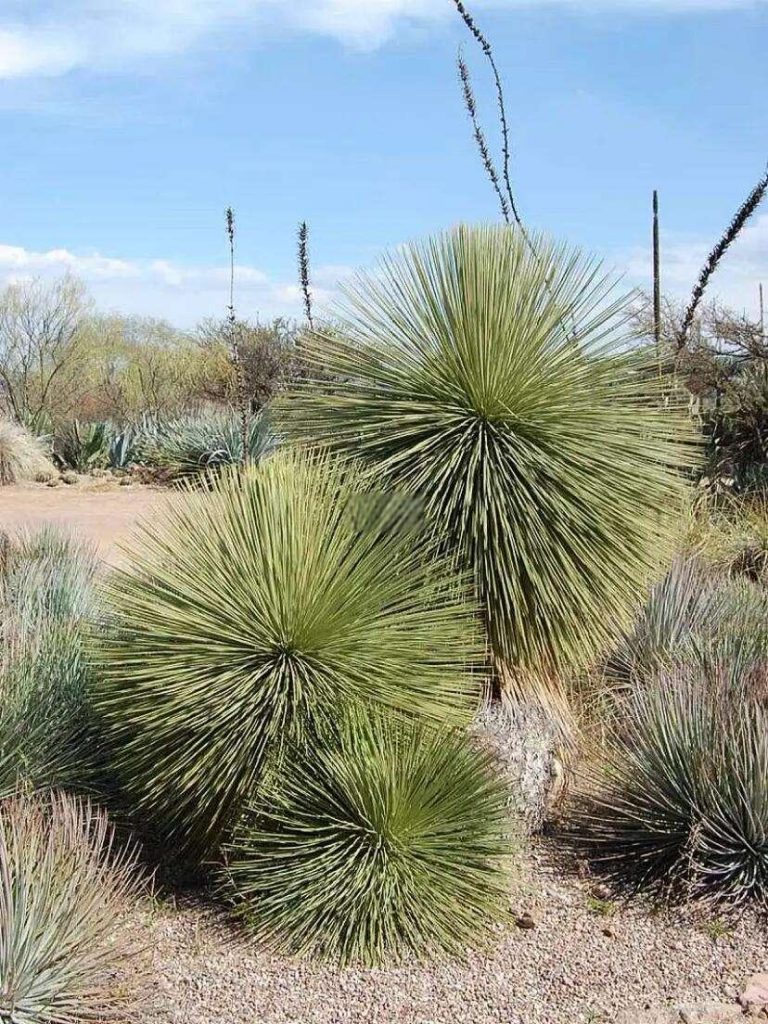Nolina matapensis seed

Nolina matapensis (Matape Nolina) Overview
Description
Nolina matapensis, commonly known as Matape Nolina or sometimes as the “Matape bear grass,” is a slow-growing, evergreen shrub native to the southwestern United States and northern Mexico. It belongs to the Nolinaceae family and is characterized by its long, narrow, green leaves that grow in a dense rosette formation. The plant can reach heights of 1 to 2 meters (3 to 6 feet), with long, graceful leaves that have a slight arch. In late spring to early summer, it produces tall, stalk-like inflorescences that bear clusters of small, white or creamy flowers, typically attracting pollinators such as bees and butterflies.
Nolina matapensis prefers rocky, well-drained soils and thrives in arid to semi-arid climates, making it a suitable candidate for xeriscaping and desert landscaping. It is commonly found in rocky hillsides, foothills, and desert scrub environments.
Ecological Role and Habitat
This plant is highly adapted to desert and semi-desert environments, able to endure long periods of drought once established. The long, thick leaves allow it to conserve water, while its deep root system helps it anchor and stabilize the soil, preventing erosion in harsh environments. Nolina matapensis grows in dry, rocky areas at elevations ranging from 1,000 to 2,000 meters above sea level, often in regions with extreme temperature fluctuations between day and night. Its natural habitat includes desert shrublands, grasslands, and rocky hillsides【96†source】【97†source】.
Uses and Benefits
Landscaping and Xeriscaping: Matape Nolina is an ideal choice for low-maintenance, drought-tolerant gardens, especially in desert landscapes and xeriscapes. It adds structure and texture to the garden with its long, arching leaves and can be used as a focal point in rock gardens or planted in groups to create a dramatic effect. Its minimal water requirements and ability to thrive in poor soils make it a practical choice for water-wise landscaping【97†source】.
Cultural and Medicinal Uses: Traditionally, parts of Nolina matapensis, like its leaves, have been utilized by indigenous peoples for making durable items such as baskets, ropes, and sandals. In addition, the plant has had limited medicinal use, often employed to treat various ailments, although more detailed studies are needed to fully understand its therapeutic potential【96†source】【98†source】.
Wildlife Support: Matape Nolina provides shelter and food for a range of desert animals, including small mammals and birds. The flowers are attractive to bees, butterflies, and other pollinators, contributing to the biodiversity of desert ecosystems. The dense rosette of leaves also offers a place for insects and small animals to seek refuge from the harsh conditions of the desert【97†source】.
Environmental Benefits
As with many other desert plants, Nolina matapensis plays a vital role in supporting the fragile desert ecosystem. By providing shade and reducing evaporation from the soil, it helps create a more stable environment for other desert plants and animals. Additionally, the plant’s ability to thrive in nutrient-poor soils and low-water conditions makes it an excellent choice for supporting sustainable and ecologically responsible landscaping practices【96†source】【97†source】.
Conclusion
Nolina matapensis, or Matape Nolina, is a valuable plant for desert and xeriscape gardens, offering not only a striking appearance but also practical benefits in terms of water conservation, wildlife support, and erosion control. Its historical and cultural significance further adds to its value as a plant species that has been utilized by indigenous communities for various purposes. Whether used in landscaping, as part of a sustainable garden, or for its ornamental qualities, Nolina matapensis remains a symbol of resilience in the harsh desert environment【96†source】【97†source】.
